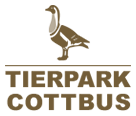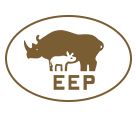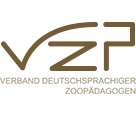Super User
Kleinprojektefonds (KPF) in der Euroregion Spree-Neiße-Bober
Dogs
Dogs... are welcome!
Taking your dog in to the zoo is allowed. They have to be lead on the short leash at all time.
Bags to clean after your dog are available free of charge at the counter.

Virtual walk
Plan
Feeding times
Every day we have feeding sessions.
| Pelicans | 11:30 |
| Lemurs | 12:00 |
| Fish and ducks at the upper pond | 14:00 |
| Elephants | 14:30 |
| Predator house (Mo & Fr day of fasting for leopard & tiger) |
15:00
|
| Penguins | 15:15 |
| Lemurs & small-clawed otters | 15:30 |
Contact
address:
Tierpark Cottbus
municipal enterprise of City Cottbus
Kiekebuscher Straße 5
03042 Cottbus
Brandenburg
Germany
Phone: 0355 - 35 55 36 0
Fax: 0355 - 612 13 5079
E-Mail: This email address is being protected from spambots. You need JavaScript enabled to view it.
Zooschool: This email address is being protected from spambots. You need JavaScript enabled to view it.
Imprint
|
Address: Tierpark Cottbus Telephone: 0355 - 35 55 36 0 |
Created and implemented by: |
| Director: | Dr.med.vet. Jens Kämmerling |
| Commercial manager: | Una Wistuba |
| Animal inspector: | Mario Wolff |
| Animal inspector: | Lutz Robel |
| Technical inspector: | Jan Plößel |
History
Cottbus Zoo opened its gates for the first time on 1 June 1954. In no time at all, a zoo for native species had taken shape in a stunning location between the River Spree and Branitz Park with substantial support from the National Building Corps and dedicated citizens.
Under the direction of Dipl.-Biol. Erhard Frommhold (1956-1963), Cottbus Zoo rose to prominence as a state-approved zoo - one of the first eight in the GDR. Dipl.-Biol. Kunz Rauschert (1963-1966) was succeeded as director by Dipl.-Biol. Klaus Jacob (1966-2002), who played a key role in developing the zoo over a number of decades.
Lions, tigers and bears arrived when the predator house was opened in 1968, followed a year later, in 1969, by the first elephant (Sundali) to come to Cottbus. A comprehensive collection of geese, ducks, storks and other aquatic birds was soon assembled and Cottbus Zoo quickly became known for its successful birdkeeping and breeding techniques.
Original breeds from this era were the Chilean flamingo in 1977 and the West African crowned crane in 1979.
A milestone in German zoo history was the first meeting of the reunified Federation of German Zoo Directors in East Germany in response to an invitation from Cottbus Zoo in 1993. With the support of the city of Cottbus, various companies and the Friends of the Zoo Association set up in 1994, new facilities were subsequently built; these included the administration and staff building (1991), penguin rocks (1993), the porcupine and meerkat house (1993), an extension to the wading bird house (1999) and the gibbon house (1997).
When Klaus Jacob retired in 2002, Dr. med. vet. Jens Kämmerling was appointed as his successor.

(left to right: Mr Stender - Architect Berlin; Mr Frommhold - Zoo Director; Mr Kruse - Architect Berlin; Mr Klein - Head of Zoo Administration; picture from 1957)
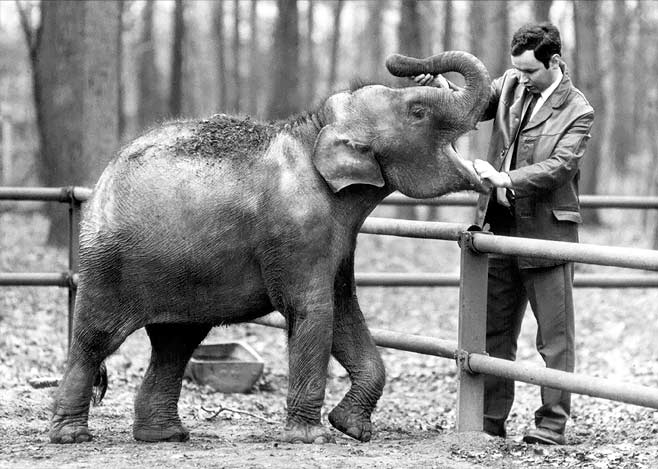
Sponsorship
| What is an animal sponsorship scheme? An animal sponsor pays a portion of the costs of keeping his or her favourite animal and makes a direct contribution to the care of animals. Although the sponsorship runs for 12 months, it can of course always be extended or arranged for a period of several years. |
How do I become an animal sponsor? Have a look at the list of animals and choose your favourite one. You can download the application form (see left). Please fill out the form and send it back to us by post. You can of course also hand in the application at the zoo ticket office. Please deposit your payment in the account specified below. |
| Tierpark Cottbus Sparkasse Spree-Neiße Bank code: 180 500 00 Account no.: 3 000 049 303 Reason for payment: Animal sponsorship |
|
What do I receive?
You will receive a certificate, be invited to the annual sponsors day and, if requested, you will be sent a receipt for your donations. A sponsorship plaque will be put on your animal's enclosure by way of a thank you and donations in excess of €200 will entitle you to receive an annual pass for the zoo.
If you have any questions, please call us on: +49 355 3 55 53 60
Sponsorship payment: EUR 15
|
 |
Sponsorship payment: EUR 25
|
 |
Sponsorship payment: EUR 50
|
 |
Sponsorship payment: EUR 100
|
 |
Sponsorship payment: EUR 150
|
 |
Sponsorship payment: EUR 200
|
 |
Sponsorship payment: EUR 250
|
 |
Sponsorship payment: EUR 350
|
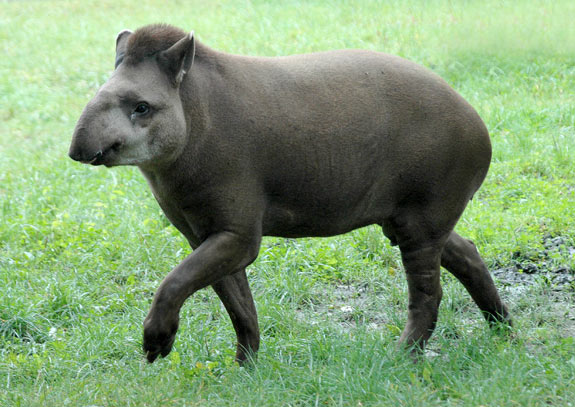 |
Sponsorship payment: EUR 500
|
 |
An animal sponsor pays a portion of the costs of keeping his or her favourite animal and makes a direct contribution to the care of animals. Although the sponsorship runs for 12 months, it can of course always be extended or arranged for a period of several years.






































































